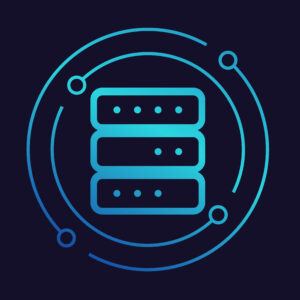The practice of using colocation sites for data centers has been around for a decade or more. However, its long-term cost; space, power and infrastructure requirements are not widely understood. As the IT industry continues to change, many organizations that rely on the colocation market do not have a recent use case to benchmark against their needs, leaving most of them to utilize colocation as an interim solution across a brief span of 1-2 years.
This blog will address colocation costs and services, service contract considerations, testing cloud suitability, and 4 use cases to establish a benchmark when moving your data center to colocation.
Colocation Cost and Services
 The colocation world offers a mixed bag of services. Larger vendors will supply the cooling, power and infrastructure needed to address client demand; some itemize costs across the various components, while others provide an all-in model. When entering a contractual agreement with a colocation vendor, regardless of the extent of the services provided, it’s imperative to gain an understanding of when upgrades are complete, and their impact on pricing.
The colocation world offers a mixed bag of services. Larger vendors will supply the cooling, power and infrastructure needed to address client demand; some itemize costs across the various components, while others provide an all-in model. When entering a contractual agreement with a colocation vendor, regardless of the extent of the services provided, it’s imperative to gain an understanding of when upgrades are complete, and their impact on pricing.
For many organizations, the benefit of not owning, leasing or maintaining a purpose-built data center structure is well worth the price, and fits more with their strategic direction or business cost model.
Negotiating Your Colocation Service Contract
Stipulating personal as well as dock access by your colocation vendor shouldn’t be overlooked in contract negotiations to ascertain your resources can perform the necessary work in their areas during downtime situations. The same considerations apply to the dock or shipping and receiving areas. Is it a shared space? Is it climate controlled? Is there a staging area? Do your due diligence in taking a tour of the various areas during the evaluation of a potential colocation vendor and articulate any special communications needs. Be sure to include these findings as part of your evaluation.
The Colocation Market Is Hot!
The demand for space has dramatically increased in the last several years. Driven by the rapid growth of IT needs as well as the push to address private cloud adoption, companies are turning to colocation providers to supply their data center needs. Additionally, we see companies using the colocation option to create edge data centers as they strive to gain an advantage on the trends in the industry. We have already seen several financial institutions, as well as retailers, implement this approach to provide point services for their customers who are demanding a much quicker and more mobile solution to their customers. We expect as 5G and IoT offerings mature that this trend will only increase, creating a different kind of data center management for companies. While companies may not own the buildings or infrastructure, they still have systems and applications to provision and support. We see it as an emerging challenge that many will face in the near future.
How Does Cloud Affect Colocation?

In the beginning, it looked as though public cloud would negatively impact colocation, but as the cloud environment has evolved, we’ve observed the opposite: clients using colocation as a way of testing cloud fit (establishing private cloud environments in colocations to validate security, resiliency, as well as latency concerns, while maintaining control). Those applications or workloads that passed the customer requirements were then repatriated and migrated to the private cloud for greater control, using colocations to test private cloud fit. In the scheme of things, colocations have been a useful tool in the continuous journey to the cloud.
4 Use Cases to Consider When Moving Your Data Center to Colocation
There are several areas that organizations should examine as part of their colocation strategy. Here are four of the most important use cases when considering colocation providers:
(1) Weed out what’s in your legacy application portfolio:
Colocation becomes a very safe and practical way to test cloud suitability without the cost or loss of control.
(2) Plan to build a more efficient and sustainable greenfield data center:
Once applications or workloads have been migrated to either a public or private cloud, if a client still wants to modernize or build their own data center, the sizing and infrastructure requirements will be more refined and usable in future planning models.
(3) Legacy environments could be client/server:
A big surprise to many is that even their client/server environments have become legacy environments that cannot move to the cloud for latency, custom code dependency or other reasons.
(4) Some applications with latency and/or security constraints can’t migrate to cloud:

One of the largest reasons we have seen for repatriation from the public cloud is security. Testing in remote, no-owned environments can help to ascertain a higher degree of confidence when deciding to move to a public cloud or not.
While these are the more common reasons, there are many other potential reasons that are more specific to the client. It makes good sense for organizations to examine the positives and negatives of this type of approach and to see how it will fit with their overall strategy.
Summary
As cloud technology continues to advance and we see a more diverse geographical dispersal of information, it is obvious that colocation facilities will play a large role in the journey to next generation data centers. If you’re thinking about how to incorporate colocation providers into your data center future plans, click on this link to see how our Data Center Strategy service offerings can help.

